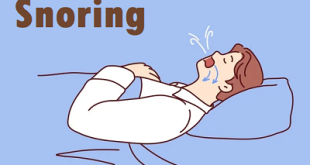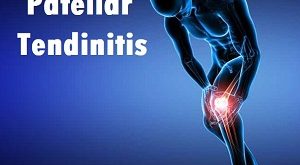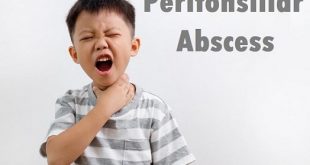Definition
Parasomnias are a group of sleep disorders marked by unusual actions, activities, or physiological events that occur during sleep or sleep-wake transitions. Parasomnias are divided according to the sleep phase in which the symptoms occur, either rapid eye movement (REM) or non-REM (NREM). Symptoms may include simple or complex abnormal movements, such as sleep talking, sleepwalking, sleep terrors, and dream enactment, or emotions, dreams, and autonomic activity. Diagnosis involves a thorough history taking from the individual and anyone who witnesses the movements or behaviors. In some cases, polysomnography is required; especially if comorbid sleep disorders are suspected. Some conditions resolve over time without any treatment. For those that require intervention, options include lifestyle or risk modifications, different forms of therapy, and medications. Choice of management is affected by individual preferences.
Epidemiology
Parasomnias are more often seen in children than in the adult population. In children, the NREM parasomnias are more common than REM parasomnia. Amongst these, the prevalence rate of confusional arousals in children of age group 3 to 13 years is 17.3% and more than 15 years is 6.9%. The prevalence rate of sleepwalking under 12 years of age is 17% and that of sleep terror is 6.5%. Nightmares are seen in 10% to 50% of the pediatric population. Parasomnias are more frequently seen in children with underlying neurologic and psychiatric issues like epilepsy, attention-deficit hyperactive disorder (ADHD) or developmental issues.
Sleep terrors are much less common in the pediatric population, with estimations as low as 3%. Nightmare disorder affects up to 6% of the population. REM sleep behavior disorder only appears in 1% of the general population, but at least 50% of those with REM sleep disorder suffer from comorbid neurodegenerative disorders, such as Parkinson’s disease, dementia with Lewy bodies, and multiple system atrophy.
Types of Parasomnias
These are the most common types of actions associated with parasomnias:
Non-REM related parasomnias:
Sleepwalking: Once thought to be acting out of dreams, sleepwalking actually takes place during deep sleep (not REM sleep, when dreams typically occur). Sleepwalkers often perform routine activities such as dressing and cleaning. Sleepwalking is quite common in children and affects approximately 1 percent of adults. Bouts of sleepwalking can be triggered by stress, anxiety, excessive alcohol, or epilepsy.
Night terrors: These severe attacks cause people, usually children, to appear to wake up and scream in fear or panic. However, these individuals are typically inconsolable, and tend to have no recollection of the event the following day.
Sleep talking: Sleep talking is when the sleeper mutters isolated speech or full conversations but has no memory of doing so. It occurs in all sleep states and can be associated with other disorders that cause a person to awaken slightly, REM-related parasomnias and sleep apnea.
Sleep-eating disorders: These episodes, like sleepwalking, occur during partial awakenings from deep sleep and cause individuals to eat without any knowledge of what they are doing, or any memory of what they have done.
REM-related parasomnias
Sleep paralysis: People with sleep paralysis are unable to move or open their eyes and this happens just as they are falling asleep or waking up. Things that might increase your risk for REM-related parasomnias include not getting enough sleep, irregular sleep-wake schedules, and stress.
Nightmare disorder: This describes recurrent, intense nightmares accompanied by emotions such as anxiety, anger, or disgust. These nightmares are different from sleep terrors because the patient is able to recall their dreams with great detail and has difficulty going back to sleep. Nightmares are common with acute stress disorder and post-traumatic stress disorder (PTSD), and occur in both non-REM and REM sleep. The nightmares may persist even after other PTSD symptoms have been resolved. This disorder may be treated either with therapy, medication or a combination of both, depending on the severity of the disorder.
Parasomnias risk factors
There are a number of different risk factors that might contribute to parasomnia development. Some of the most common are the following:
Age: Age would certainly be an important factor since parasomnias like bedwetting and sleepwalking often occur during childhood.
Stress: Stress is also a heavy contributor to different types of parasomnias like sleepwalking, night terrors, sleep-related eating disorders, sleep paralysis and more.
Genetics: Additionally, genetics can play a huge role. If your parents struggle with any types of parasomnia, you are most likely to have them as well.
Drug and alcohol abuse: It will not only ruin your liver but also cause a whole bouquet of new parasomnias and definitely worsen any existing ones.
Medicine: No matter how effective your medications are, some of them may have various types of parasomnias as a side effect.
PTSD: Post-traumatic stress disorder (PTSD) is frequently associated with a type of parasomnias like nightmare disorder. Almost ⅘ of PTSD patients would experience nightmare disorder during at least 2-3 months after the trauma.
Causes of Parasomnias
There are many possible causes of parasomnia. The disorder might be associated with multiple triggers, including:
- Stress
- Anxiety
- Depression
- PTSD
- Substance use
- Certain medications
- Irregular sleep schedules, like shift work
- Other sleep disorders, like insomnia
- Sleep deprivation
- Neurological conditions, like Parkinson’s disease
Symptoms of Parasomnias
Symptoms of parasomnias vary depending on which form you have. However, some common symptoms most parasomnias share include:
- Difficulty sleeping
- Fatigue during the day
- Waking up disoriented
- Exhibiting unexplainable behaviours in your sleep
- Frequent nightmares
- Having bruises and injuries, you can’t explain
Parasomnias complications
Significant complications from Parasomnia (e.g. injury)
Suspected specific conditions
- Nocturnal Seizures
- REM Sleep Behavior Disorder
- Obstructive Sleep Apnea in Children
- Periodic Limb Movement Disorder
Diagnosis and test
Your sleep medicine specialist will ask you and your sleep partner about your sleep symptoms. You will also be asked about your medical history, family history, alcohol use and any substance abuse. You’ll be asked about your current medications. You may be asked to keep a sleep diary and your bed partner may be asked to keep track of your sleep events.
Other sleep disorders tests include:
Sleep study (polysomnogram): This is a sleeping laboratory in which you’ll be monitored as you sleep. Your brain waves, heart rate, eye movements and breathing will be recorded as you sleep. Video will record your movements and behavior. While some sleep studies can be done at home, an in-lab study will be recommended if there’s concern for parasomnia.
Video electroencephogram (EEG) or sleep EEG: These tests help your healthcare provider see and record your brain activity during a brain event.
Neurologic exam, CT or MRI scan to detect degeneration of the brain or other possible neurologic causes of your symptoms.
Treatment and medications
Parasomnia treatment depends on the type and severity of the parasomnia. In the cases of frequent or recurring parasomnia, medication can help manage it. Some medications prescribed to help treat parasomnia include:
- Antidepressants
- Melatonin
- Topriamate
- Levodopa
- Benzodiazepines
However, if your parasomnia is caused by medication, your doctor may recommend a different medication or dose.
People with parasomnia may also benefit from cognitive behavioral therapy. This type of therapy often helps with mental health concerns, like stress and anxiety. Other methods that can be used alongside cognitive behavioral therapy include psychotherapy, relaxation therapy and hypnosis.
There are also some treatment options people can try at home, such as:
- Scheduling awakenings, where a parent wakes a child about 15 to 30 minutes before they spontaneously wake up. This can help minimize behaviors that follow a certain pattern, such as sleepwalking and night terrors
- Creating a safer sleep environment, such as sleeping alone, removing dangerous items from the home, locking doors and windows, placing the mattress on the floor and sleeping with extra padding
Parasomnia episodes can vary from person to person, which is why it’s important to talk to your doctor to receive an individualized treatment plan. Our sleep medicine experts are here to help you get a safe and comfortable night’s sleep.
Prevention of Parasomnias
Although some causes of parasomnias are less likely to be prevented, such as those due to neurological diseases, mental health issues or heredity, others may be prevented by following some of the same management approaches discussed in this article. These include getting seven to nine hours of sleep a night sticking with consistent bedtime and wakeup times, and limiting alcohol and recreational drug use. Also, ask your healthcare provider to review your current medications. Many can disrupt sleep. If this is the case, perhaps different drugs can be prescribed.
 Diseases Treatments Dictionary This is complete solution to read all diseases treatments Which covers Prevention, Causes, Symptoms, Medical Terms, Drugs, Prescription, Natural Remedies with cures and Treatments. Most of the common diseases were listed in names, split with categories.
Diseases Treatments Dictionary This is complete solution to read all diseases treatments Which covers Prevention, Causes, Symptoms, Medical Terms, Drugs, Prescription, Natural Remedies with cures and Treatments. Most of the common diseases were listed in names, split with categories.







